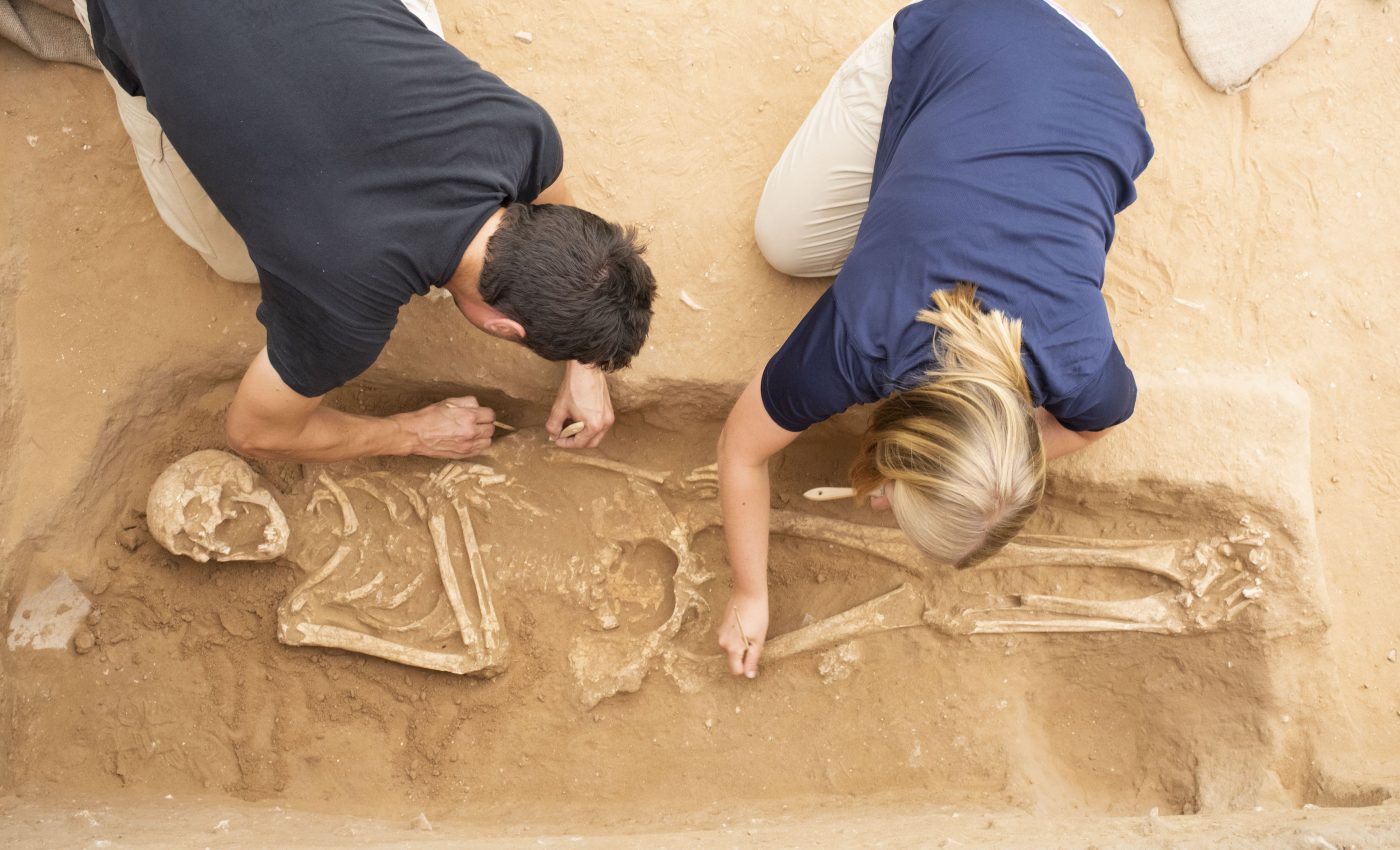
Using DNA to unravel the mystery of the Biblical Philistines
For the first time, scientists have retrieved and analyzed genome-wide data from people who lived during the Bronze and Iron Age (roughly 3,600 to 2,800 years ago) in the ancient port city of Ashkelon. This city was one of the major Philistine cities during the Iron Age.
The Philistines are perhaps most well-known for their role in the Hebrew Bible as the enemies of the Israelites. But other than some ancient texts revealing that Philistines came to Crete, little is known about the origins of the Philistines.
Over a century ago, Egyptologists posited that a group called the Peleset in texts from the late twelfth century BCE were the same group as the Biblical Philistines. The researchers proposed that the Peleset travelled from “the islands,” and attacked what is now Cyprus and the Turkish and Syrian coasts, ultimately attempting to invade Egypt. Then from 1985 to 2016, the Leon Levy Expedition to Ashkelon, a project of the Harvard Semitic Museum, initiated the search for the origin of the Philistines at Ashkelon – one of the five Philistine cities according to the Hebrew Bible.
The team discovered significant changes in the ways of life during the 12th century BCE, which they linked to the arrival of the Philistines. However, many scholars argued that these cultural changes were simply a result of trade or local imitation of foreign styles, not the result of a major movement of people.
This new study led by scientists from the Max Planck Institute for the Science of Human History and the Leon Levy Expedition is the result of over 30 years of archaeological work and genetic research. It concludes that the advent of the Philistines in the southern Levant involved a movement of people from the west during the Bronze to Iron Age transition.
To determine this, the researchers recovered genomic data from the remains of 10 individuals who lived in Ashkelon during the Bronze and Iron Age, which allowed them to compare the DNA of the Bronze and Iron Age people of Ashkelon to figure out how they were related. Their findings revealed that individuals across all time periods derived most of their ancestry from the local Levantine gene pool. However, those who lived in early Iron Age Ashkelon had a European derived ancestral component that was not found in their Bronze Age predecessors.
“This genetic distinction is due to European-related gene flow introduced in Ashkelon during either the end of the Bronze Age or the beginning of the Iron Age. This timing is in accord with estimates of the Philistines arrival to the coast of the Levant, based on archaeological and textual records,” says leading author of the study Michal Feldman of the Max Planck Institute for the Science of Human History. “While our modelling suggests a southern European gene pool as a plausible source, future sampling could identify more precisely the populations introducing the European-related component to Ashkelon.”
When they analyzed the genomes of later Iron Age individuals from Ashkelon, the research team found that the European related component could no longer be found.
“Within no more than two centuries, this genetic footprint introduced during the early Iron Age is no longer detectable and seems to be diluted by a local Levantine related gene pool,” explains corresponding author Choongwon Jeong of the Max Planck Institute of the Science of Human History.
“This data begins to fill a temporal gap in the genetic map of the southern Levant,” explains senior author Johannes Krause of the Max Planck Institute for the Science of Human History. “At the same time, by the zoomed-in comparative analysis of the Ashkelon genetic time transect, we find that the unique cultural features in the early Iron Age are mirrored by a distinct genetic composition of the early Iron Age people.”
—
By Connor Ertz, Earth.com Staff Writer
Image Credit: Melissa Aja. Courtesy Leon Levy Expedition to Ashkelon













